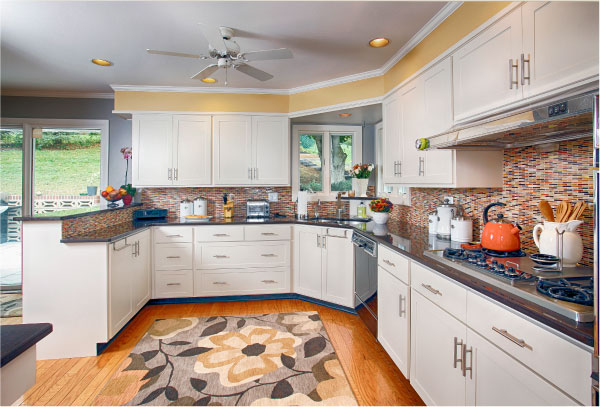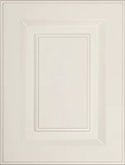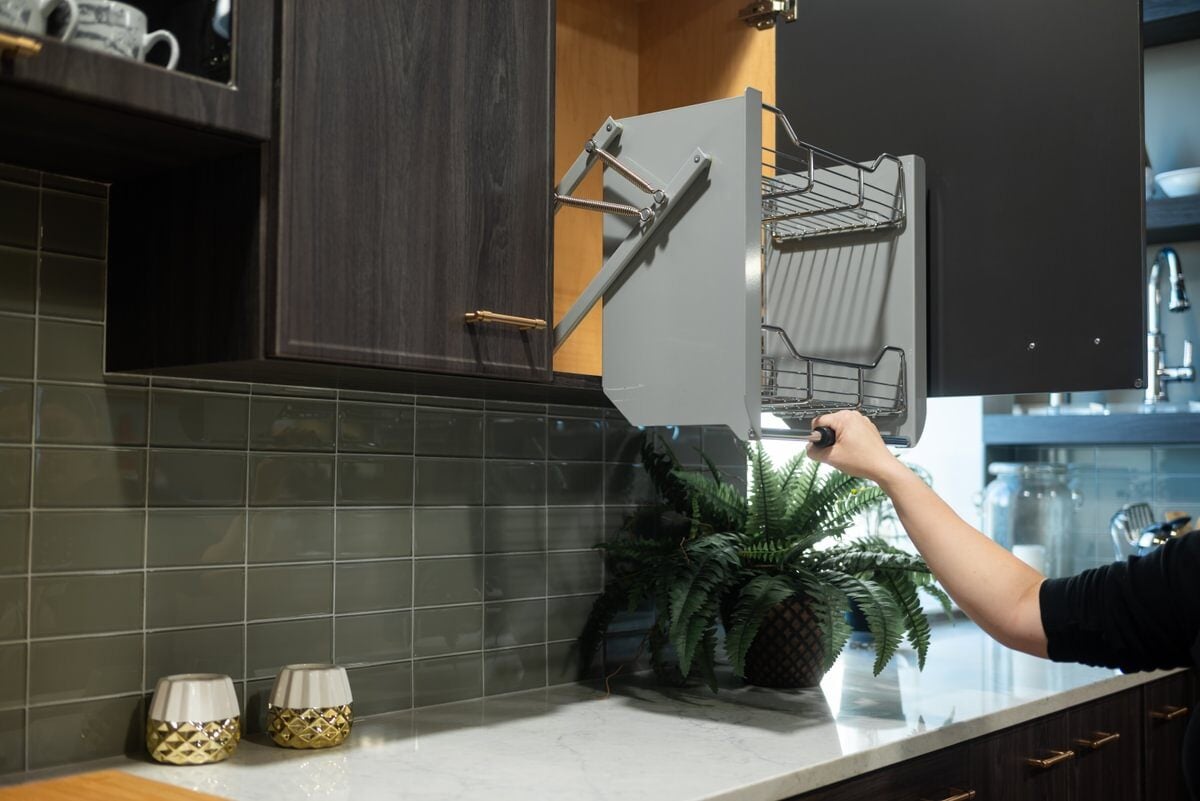Smart homeowners are just as concerned about strength and longevity as they are about looks when selecting the fixtures and finishes for a kitchen remodel. It doesn't matter how great your kitchen looks if you're going to have to start repairing and replacing things within a short amount of time. Cabinets are one of the items you'll want to pay particular attention to.

Frameless Cabinets - Laminate Cabinets in Tropical Mahogany
Not only does the cabinetry comprise the large majority of the wall space in most kitchens, cabinets are one of the "big ticket" items. You want them designed and installed right the first time around. Homeowners who like frameless cabinet designs may be concerned that the cabinet boxes aren't strong enough to be durable This is not necessarily the case.
Before we go to deeper into the strength component, let's do a quick review of "framed vs. frameless cabinets."
What Are Frameless Kitchen Cabinets?
Until fairly recently, framed cabinets were the American standard, consisting of a cabinet box that is reinforced by a face frame. This frame, similar to a picture frame, goes just a bit beyond the cabinet box opening. If your home was built more than 10 years ago, odds are your kitchen cabinets are fully-framed. If you open a cabinet door, you'll notice that the door is mounted to the face frame and that you can feel the lip created by the frame when you reach around the interior and touch the box.
Frameless cabinets, on the other hand, were developed in Europe, where the modern-minimalist movement originated. With this style, the frame is left off completely, creating a more seamless look. When the doors and drawers are closed, all you see are the closed doors and drawers, without the face frame side margins or the stile (the piece that runs vertically down the middle of a framed cabinet) along the edges. The cabinet doors are mounted directly to the cabinet box.
Because the entire cabinet box is "open," frameless cabinets typically have more storage space than their framed counterparts, which can be particularly enticing when remodeling a smaller kitchen space. Also, the shelves are easy to take in, out and readjust because they aren't blocked by the frames.
Are Frameless Cabinets Stronger Than Framed Cabinets?
Now, we'll move to the strength and durability question. The bare-bones answer would be that cabinets with a frame are slightly stronger than frameless cabinets, especially for free-standing cabinets. However, when the job is done right, framed cabinets should be more-than-durable enough to provide low-maintenance performance year-after-year, even in high-traffic kitchens.
Choose high-quality materials. The stronger the materials, the more durable the product. In the case of frameless cabinets, the "Achilles heel" is usually the doors because they don't have the backup face frame behind them. Doors are more prone to sagging or uneven gaps if they're not installed correctly - and with strong materials. So, materials and installation are important.
Work with a reputable cabinet installer. Yes, those pre-fabricated or "stock" cabinets you see at big box stores look lovely in the showroom. And they look lovely when first installed. Five years later, however, they don't look so lovely. The screws are stripping out, doors are unbalanced and wear-and-tear is noticeable. Investing in high-quality materials and professional installation results in strong, durable cabinetry.
Numbers and walls. Frameless cabinets exemplify the "safety in numbers" idea; the more cabinets you have, the stronger the group will be. When you combine that concept with wall-mounted cabinets, the strength-factor increases further.
Working with a professional kitchen design-build team will ensure your cabinetry stands the test of time - whether they're framed OR frameless.











